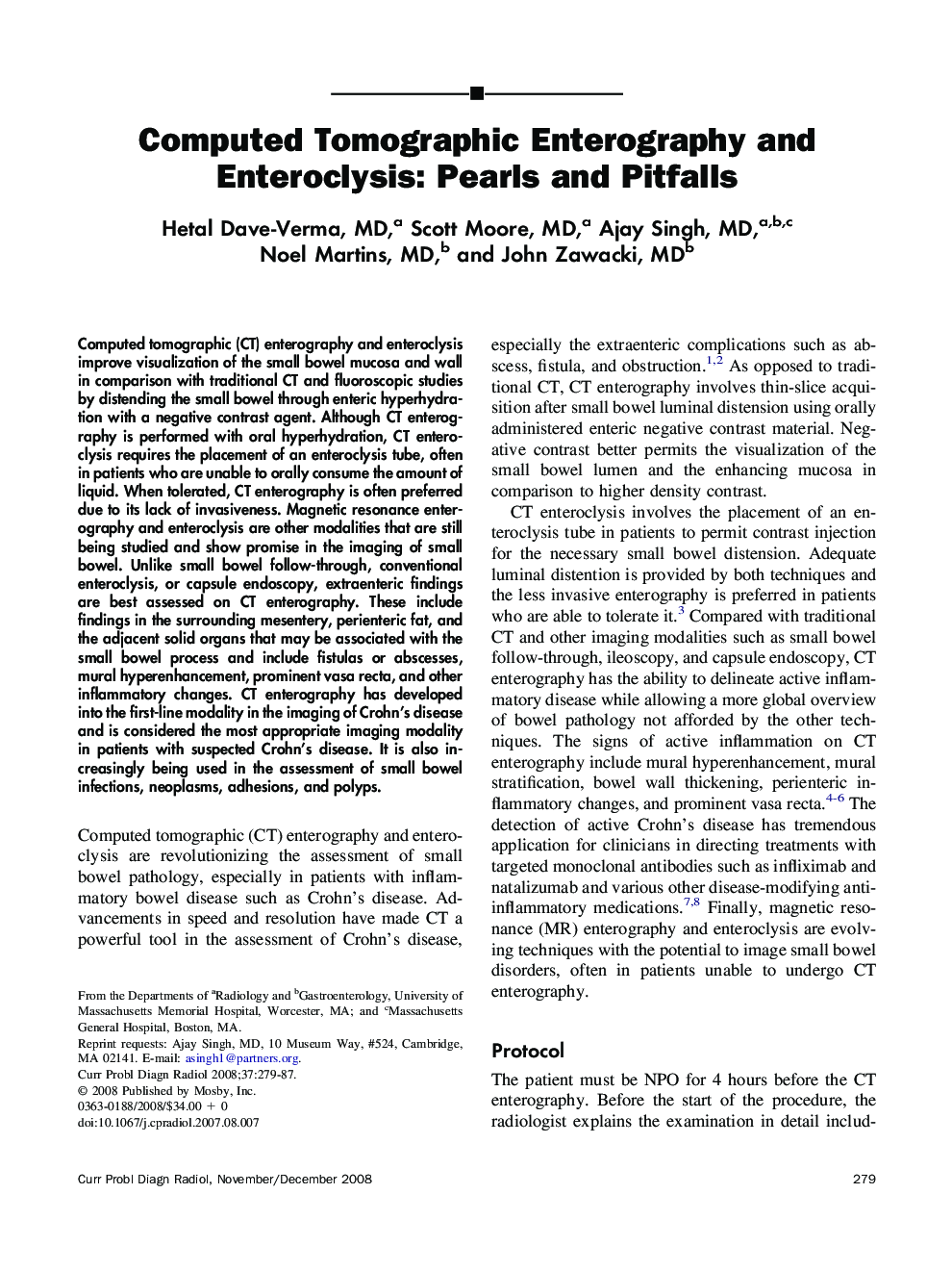| Article ID | Journal | Published Year | Pages | File Type |
|---|---|---|---|---|
| 4223839 | Current Problems in Diagnostic Radiology | 2008 | 9 Pages |
Computed tomographic (CT) enterography and enteroclysis improve visualization of the small bowel mucosa and wall in comparison with traditional CT and fluoroscopic studies by distending the small bowel through enteric hyperhydration with a negative contrast agent. Although CT enterography is performed with oral hyperhydration, CT enteroclysis requires the placement of an enteroclysis tube, often in patients who are unable to orally consume the amount of liquid. When tolerated, CT enterography is often preferred due to its lack of invasiveness. Magnetic resonance enterography and enteroclysis are other modalities that are still being studied and show promise in the imaging of small bowel. Unlike small bowel follow-through, conventional enteroclysis, or capsule endoscopy, extraenteric findings are best assessed on CT enterography. These include findings in the surrounding mesentery, perienteric fat, and the adjacent solid organs that may be associated with the small bowel process and include fistulas or abscesses, mural hyperenhancement, prominent vasa recta, and other inflammatory changes. CT enterography has developed into the first-line modality in the imaging of Crohn's disease and is considered the most appropriate imaging modality in patients with suspected Crohn's disease. It is also increasingly being used in the assessment of small bowel infections, neoplasms, adhesions, and polyps.
